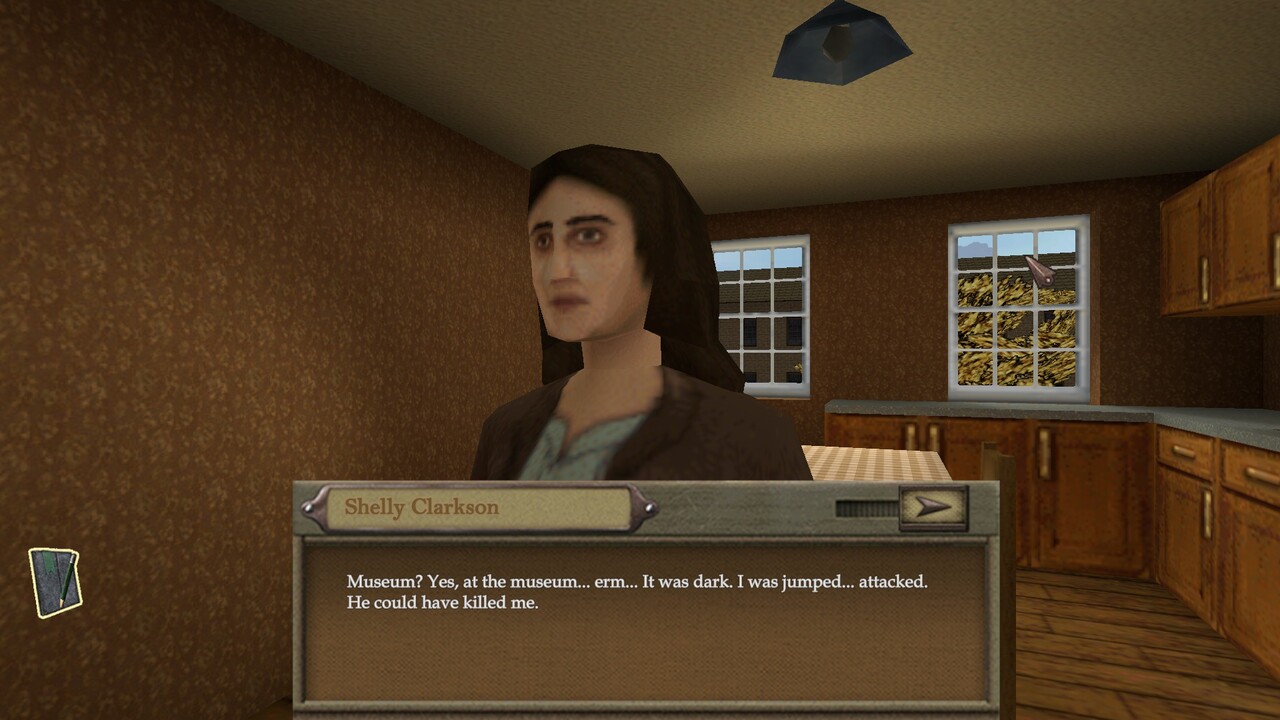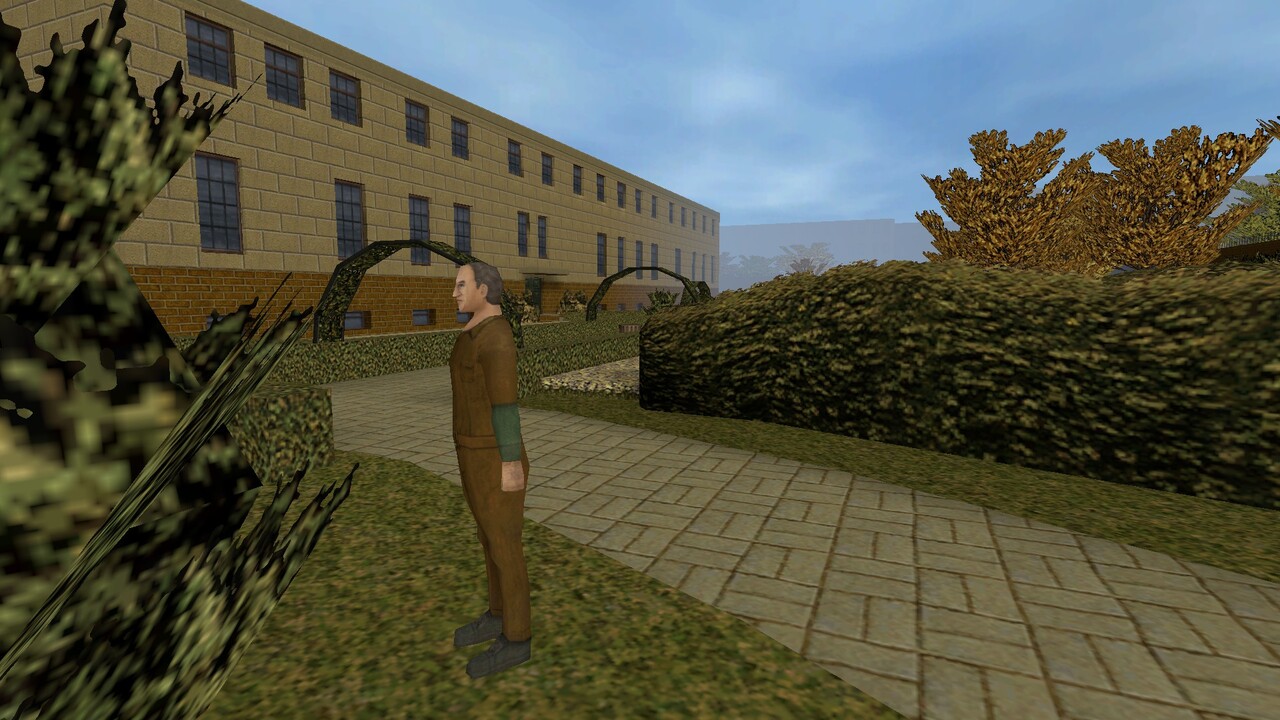Mystery of the Malign review
Mystery of the Malign was a fascinating experience to me. I have little to no experience with the conventions and tropes of mystery-solving games, and this game did a brilliant job with that blank canvas. Much like the original Portal will forever hold a special place in my library for being my gateway to a new strata of games, Mystery of the Malign has stretched my idea of what I enjoy in games. I want to get into what I think this game does right, but first, let's learn how to even play.
A quick tutorial makes the base gameplay clear. You drive to a small apartment block with your sarcastic partner-in-detective. The names on the doorbells are faded and you must figure out which bell belongs to your contact based on environmental clues within the small courtyard. Any open mystery gets an entry in your detective's journal, describing the situations with blank spaces to fill. In this case you must match names to apartments, which the game confirms for you with a neat little musical sting once you get it right. Go meet your contact, learn how to use items, and off you go to the main location. The game begins.

The victim and your only lead: Shelly Clarkson
On its surface it lacks many things that would normally draw someone into an experience. 'Engagement and appeal,' as a indie game coach might say. It's not particularly pretty, it doesn't create any sense of tension through its mechanics or narrative, and you're not given much of a motivation. Quite the opposite, your partner seems unconvinced there is anything worth investigating in the first place and the anxious woman whose case you're chasing just wants to be left alone. You're simply dropped off at a museum where an attack has apparently taken place, with the vague mission of "Let's just have a look around." It's a sandbox. Usually that term is associated with the kind of visceral fun of building and squashing little castles or throwing sand in the neighbor kid's eyes, but this isn't quite that. In this sandbox you have a shovel, and it is time to dig.
Over the years I've come to theorize that one of the biggest challenges in game design is putting the right amount of trust in the player. On one side of that you have game that seem just a little too anxious to have you miss anything and are constantly ushering you one way or another. "Treating you like an idiot," colloquially speaking. This is where I'd put an example, but I don't trust myself not to derail this post and my blood pressure is high as it is. On the other hand you have something like Hollow Knight, which was both praised and criticized at the time for not giving the player any character motivation or goals to start with. Yes, the beginning is aimless, but the exploration and story revelations are enhanced because they are driven by the player (and sometimes you fall into a hole with many many spiders and that's just how it goes). MyHouse.WAD is on the extreme end of this spectrum, in my opinion. In the horror genre, there is a temptation to force players to engage with games in a certain way, to cap their knees and make them walk through your scary hallways a snail's pace, to grab their heads and make them look at the ghosties. In contrast, building an atmospheric horror experience on top of the Doom engine, where the movement speed caps out at mach 2, hiding the meat of it in a way that most players are unlikely to find even 10% of it, and then dropping it on a modding site with barely a hint is a herculean act of bravery. Mystery of the Malign isn't quite that nutty - honestly I just wanted to yap about MyHouse a bit - but it firmly decides to put its trust in the player to engage with the situation in from of them.

Welcome to scenic Goddard Public Museum
The game expects your own curiosity to drive you on, and your snooping is rewarded. I'm about to go on about red herrings and superfluous information, but don't let me make it seem like you're just groping in the dark. In my opinion the game paces its critical clues very well to create a sense of a growing conspiracy. You'll be scrutinizing details and making tenuous connections, then suddenly stumble across that one little crumb that raises the stakes tenfold. It's those moments where things go from enigma to conspiracy when the game grips you the most. Someone is lying. They think they're getting away with it, but you're gonna get their ass.
So, what about these red herrings? The scenes you're investigating here are somewhat realistic in that not everything present is necessarily relevant to the case. You don't feel like you're just clicking on stuff to win, you're snooping, and that means chasing dead leads sometimes. Revelation doesn't come easy. Determining what information is actually relevant is up to you. Not to give anything away, but right at the beginning there are important looking clues that go absolutely nowhere and innocuous details whose importance you won't understand until nearly the end. This also plays a role in the interviews. Oh right, there's a few additional characters standing around (about a dozen) and you can talk to all of them about any topic you've noted so far. Topics meaning any odd piece of paper you've interacted with or person that's been passingly mentioned in conversation. The interface for navigating all these clues is truly torturous, but this complete freedom is important, in my opinion. You do not need the game's permission to quiz the gardener about ancient occult artifacts. You have to think about what the important questions to ask are, or invest the time to exhaust dialogue options.

I don't know shit from fuck
I don't want to overstate the game's harshness. The fillable case notes I mentioned earlier do provide nice 'mental checkpoints,' letting you make sure that you're not on the completely wrong path. I wouldn't say they are leading, but text around the blanks will at least tell you what kinds of questions you ought to be asking yourself. Finally putting the pieces together on a corner of the mystery brings a satisfaction I can't quite describe.
While playing I also found myself not minding the simple graphics at all. Yeah I know, I'm used to playing the kinds of games where an Ikea coffee table would be considered 'challenging topography,' but hear me out on this one. With few exceptions, graphical fidelity and visual clutter are strongly correlated. Many modern games need to rely on non-diegetic markers or strong colors to guide the player, because the level of detail that is expected of these projects doesn't leave enough room for clever level design to 'funnel' the player towards their goal. Mystery of the Malign is low-fidelity and therefore low-clutter. It means that even a subtly dented trash can or a scrap of leather in a dark room can stick out and the player can be reasonably expected to notice those things themselves, and noticing those things feels great. Again, it enhanced the feeling of being a nosy bitch. The game didn't tell me to read that memo on the museum director's bookshelf, I saw it and I wanted to read it.

Note the dent and the round imprint
Alright, I've hyping this game up for a hot minute now, but of course it's not perfect. You've maybe noticed that I haven't been giving a lot of concrete examples of the kinds of problems you solve and that's because the game is relatively small and I can't get too specific without potentially giving away something critical. The game can be long, depending on how quickly or slowly you make connections, but it revolves about one central mystery. On one hand that's smart prioritization for a small developer - I would much prefer on big puzzle to sink my teeth into over web of smaller, worse cases - on the other I have to wonder if they themselves had bigger ambitions for the project. When you finish the tutorial you get into your car and a map screen opens. It has one other location, the museum. You click it and then you never see this screen again. I find it likely that the developer at one point planned to have the player move between locations, otherwise implementing the map seems unnecessary. You also have access to a collection of documents on various cryptids and occult matters, with entries unlocking as they become relevant to the case. Some of these entries, as far as I can tell, never unlock. Again, this could be in the interest of not leading the player on based on the topics available, or it could be more stuff that didn't make it into the game.
Another aspect I felt was a weakness is that your understanding of the case is not strongly tied to progression through the story. Principally this is a good thing, because solving every detail of the case with no outside help is very difficult (I certainly didn't manage it), so letting the player carry on with some holes in their files makes sense. Still, I would have loved to actually leverage the information I worked for in a meaningful way. There's only one major confrontation with a suspect and it mostly serves to make the next event in the plot happen. You don't really feel like you've 'rumbled' anyone.
The game also desperately needs a better way to organize clues. You can mark certain topics as favorites and that's about it. More ways to sort them or mark some as dead ends perhaps would be very helpful.
Looking at all these gripes in one place makes me imagine a theoretical follow-up to Mystery of the Malign with multiple locations and and a web of conspiracy made up of separate but interlocking cases, where you manage binders of clues and you have to confront the right people with the right ones to move the story along. It would be complicated and obtuse, but in my head it's beautiful. It's lucky that I didn't make this game, because reading this back I'm confident I would have fucked it. I don't think I'd change anything besides making that GOD DAMN lighter have, like, a 50% larger lighting radius. Genuinely that thing is useless. You see like 30cm in front of you. I'd have an easier time navigating a dark hallway by licking the walls.
As it stands, Mystery of the Malign is a great game. Probing the steam review tells me that it's a hit with fans of Return of the Obra Dinn and The Case of the Golden Idol. I'm happy to report that the recommendation cascade works in reverse too; I loved this game and now want to play every detective game ever made. If it wasn't obvious, don't treat me as having any authority on matters of game design, I was totally shooting from the hip with that use of 'non-diegetic' earlier. I just like thinking about games, even if I'm off-base some or most of the time. I hope that my unrefined view of this genre has been at least somewhat helpful. Maybe in a year or two I'll look back at this game with a more tempered enthusiasm, but just like Portal was the pinnacle of atmosphere and story in games back then, right now Mystery of the Malign is the pinnacle of sleuthing thrills.

This is your domain




